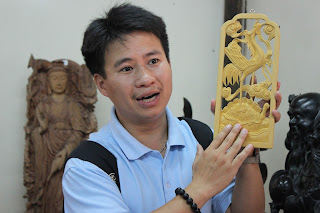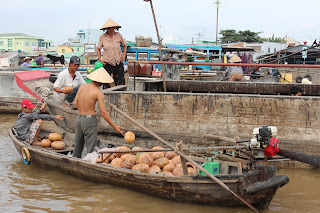Throughout our journey Huy has repeatedly mentioned how the Vietnamese have kept parts of cultures which have conquered them over time and have made the part uniquely Vietnamese. Examples of Vietnamization:
From the Chinese: The signs of the zodiac have been Vietnamized. Where
the Chinese have the year of the ox, for the Vietnamese it is the water
buffalo. Where the Chinese have the year of the rat, for the Vietnamese
it is the cat.
Confucianism: Confucianism reached Viet Nam over 2,000 years ago. The Vietnamese imperial dynasties adopted Confucianism pragmatically because of its ability to sustain a system of social order without much repression, and for its code of social mobility based on merit. The Vietnamese people think of Confucius not as a god, but as a founder of a philosophy. Huy commented: "The knowledge you gain from education defines what you can contribute to society."
From the French: "We threw out the French, but kept the bakery...(pause) so you can have a choice at breakfast." e.g. croissants, brioches, patisseries.
At the daycare center in the small village near Hoi An, the 3- and 4-year-olds broke into a melody which we recognized as Frere Jacques; the lyrics were Vietnamese.
Water hyacinths were imported by the French because they liked the lavendar blossoms. The plants are invasive in Vietnam. We have seen the plants near rice fields and floating on the Mekong River. The Vietnamese are finding ways to use the troublesome plants: as food for pigs, as fertilizer, as strong paper for paper bags, for furniture,clothing, and hand bags. Yes, the Vietnamese are creative and enterprising.













